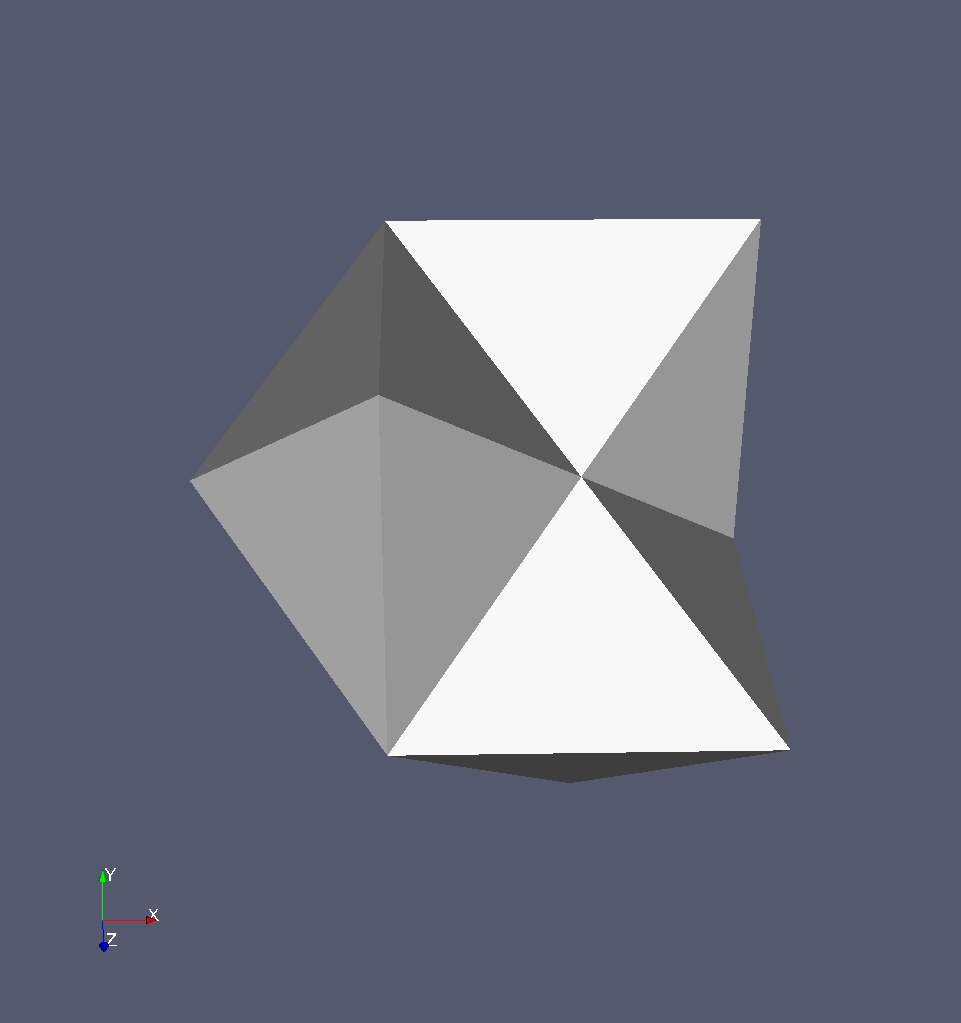Tiling
Functions | |
| template<typename T , typename V , typename IS , class LSF > | |
| void | IndSimpSet::tile (const BBox< 2, T > &domain, T length, const LSF &f, IndSimpSet< 2, 2, true, T, V, IS > *mesh) |
| Tile the object with equilateral triangles. | |
| template<typename T , typename V , typename IS > | |
| void | IndSimpSet::tile (const BBox< 2, T > &domain, const T length, IndSimpSet< 2, 2, true, T, V, IS > *mesh) |
| Tile the rectangular region with equilateral triangles. | |
| template<typename T , typename V , typename IS , class LSF > | |
| void | IndSimpSet::tile (const BBox< 3, T > &domain, const T length, const LSF &f, IndSimpSet< 3, 3, true, T, V, IS > *mesh) |
| Tile the object with a body-centered cubic lattice. | |
| template<typename T , typename V , typename IS > | |
| void | IndSimpSet::tile (const BBox< 3, T > &domain, const T length, IndSimpSet< 3, 3, true, T, V, IS > *mesh) |
| Tile the rectilinear region with a body-centered cubic lattice. | |
Detailed Description
These functions use the cookie-cutter algorithm to mesh an object. The object is described implicitly with a level set function.
Future work: Tile inside and around the object. Refine the mesh near the boundary. Then apply the cookie cutter algorithm. This will increase fidelity at the boundary while maintaining the desired edge length in the interior.
Function Documentation
| void tile | ( | const BBox< 3, T > & | domain, | |
| const T | length, | |||
| IndSimpSet< 3, 3, true, T, V, IS > * | mesh | |||
| ) | [related, inherited] |
Tile the rectilinear region with a body-centered cubic lattice.
- Parameters:
-
domain is the rectilinear domain to tile. length is the maximum tetrahedron edge length. mesh is the indexed simplex set.
The template parameters can be deduced from the arguments.
Tis the number type.Vis the vertex type, an 3-tuple of the number type. It must be subscriptable.ISis the indexed simplex type, a tuple of 4 integers. It must be subscriptable.
- Note:
- This function simply calls the above tiling function with a trivial level set function.
References IndSimpSet< _N, _M, _A, T, V, IS >::tile().
| void tile | ( | const BBox< 3, T > & | domain, | |
| const T | length, | |||
| const LSF & | f, | |||
| IndSimpSet< 3, 3, true, T, V, IS > * | mesh | |||
| ) | [related, inherited] |
Tile the object with a body-centered cubic lattice.
- Parameters:
-
domain is the rectilinear domain to tile. length is the maximum tetrahedron edge length. f is the level set description of the object. mesh is the indexed simplex set.

A BCC block with 12 tetrahedra.
The template parameters can be deduced from the arguments.
Tis the number type.Vis the vertex type, an 3-tuple of the number type. It must be subscriptable.ISis the indexed simplex type, a tuple of 4 integers. It must be subscriptable.LSFis the level set function that describes the object. Negative values are inside.
| void tile | ( | const BBox< 2, T > & | domain, | |
| const T | length, | |||
| IndSimpSet< 2, 2, true, T, V, IS > * | mesh | |||
| ) | [related, inherited] |
Tile the rectangular region with equilateral triangles.
- Parameters:
-
domain is the rectangular domain to tile. length is the triangle edge length. mesh is the indexed simplex set.
The template parameters can be deduced from the arguments.
Tis the number type.Vis the vertex type, an 2-tuple of the number type. It must be subscriptable.ISis the indexed simplex type, a tuple of 3 integers. It must be subscriptable.
- Note:
- This function simply calls the above tiling function with a trivial level set function.
References IndSimpSet< _N, _M, _A, T, V, IS >::tile().
| void tile | ( | const BBox< 2, T > & | domain, | |
| T | length, | |||
| const LSF & | f, | |||
| IndSimpSet< 2, 2, true, T, V, IS > * | mesh | |||
| ) | [related, inherited] |
Tile the object with equilateral triangles.
- Parameters:
-
domain is the rectangular domain that contains the object. length is the triangle edge length. f is the level set description of the object. mesh is the indexed simplex set.
The template parameters can be deduced from the arguments.
Tis the number type.Vis the vertex type, an 2-tuple of the number type. It must be subscriptable.ISis the indexed simplex type, a tuple of 3 integers. It must be subscriptable.LSFis the level set function that describes the object. Negative values are inside.
Referenced by tile(), and IndSimpSet< _N, _M, _A, T, V, IS >::tile().
Generated on Thu Jun 30 02:14:58 2016 for Computational Geometry Package by
 1.6.3
1.6.3